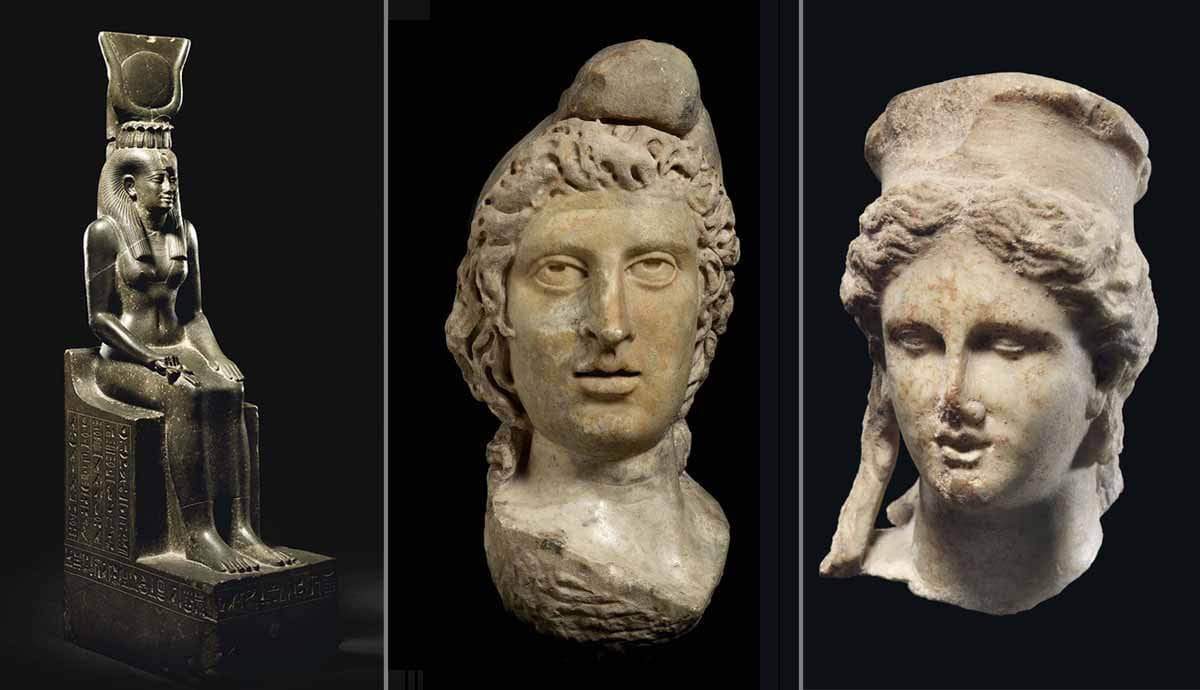The state religion of the Olympian gods and of the deified emperors still commanded the loyalty of many Romans, who regarded the proper observance of its rites as the equivalent of patriotism. But by the first century A.D. the old faith no longer allayed the fears of millions who believed in blind fate and inevitable fortune: people increasingly sought a religion that would hold out the hope of an afterlife better than the grim reality on earth. So, along with astrology and magic, mystery religions began to appear in Rome.
These new faiths taught that the human soul could be saved by union with the soul of a savior, who in many cases had experienced death and a form of resurrection. This union was accomplished by a long initiation, marked by purifications, ritual banquets, and other ceremonies designed to overcome human unworthiness. The god would enter the candidate, who would be saved after physical death. The initiate sought a mystical guarantee against death by survival in a hereafter. One could join as many of these cults as one liked and still practice the state religion.
The Greeks had such cults in the rites of Demeter at Eleusis and in the mysteries of Dionysus. The rites of Dionysus, now called Bacchus, became popular in Rome, celebrating as they did carnal pleasures and the abandonment of all restraint. On hundreds of late Roman sarcophagi can be seen the Bacchic procession celebrating the joys of drink and sex. But the cult of Bacchus was too materialistic to satisfy all Romans.
One of its major competitors was the cult of the great mother-goddess Cybele, which came from Asia Minor at the end of the Second Punic War. Cybele’s young husband, Attis, died and was reborn annually (like Demeter’s daughter Persephone). Attis was thus a symbol of renewed fertility. The rites of Cybele included fasting, frenzied processions, self-flagellation, and self-mutilation by the priests. The first temple to Cybele at Rome dated from 204 B.C., but the zenith of the cult was reached in the second century A.D. By that time the practices included the slaughter of a bull above a pit into which the initiate had descended to be bathed by the blood, with subsequent cleansing by milk and wool in a rite of purification.
Even more popular, mainly with women, was the cult of the Egyptian goddess Isis, whose consort, Osiris, died and was reborn each year. All “feminine” elements— lascivious or chaste—were concentrated in an elaborate ritual of worship for Isis, the loving mother-goddess, who promised her adherents personal immortality. Conversion to Isis worship often emphasized her chastity and morality.
From Persia about the first century A.D. came the cult of the god Mithra, allied to the supreme powers of good and light, and so connected with the sun. The male initiates passed in succession through seven grades of initiation, qualifying for each by severe tests. Baptism and communion were also part of the ritual. Unconquered, physically rough, and self-denying, Mithra became a model for the Roman soldier, to whom he held out the hope of salvation. Temples of Mithra have been found in every province of the empire.
These cults appealed widely to the masses rather than to the educated. But there were trends in mysticism that were popular among intellectuals, too. The philosopher Epicurus had taught that unnecessary fear lay at the root of the troubles of humanity. Whatever gods might exist took no interest in what humans might do; life after death was only untroubled sleep. A quiet life and the cultivation of friendships would bring happiness; if evil came, one could endure it. But as ordinary people could hardly banish fear or pain or desire by following Epicurean formulas, the Epicureans were few in number. So were the Stoics, who prescribed the suppression of human emotions; people should accept the universe and simply defy evil to do its worst.
Perhaps halfway between religion and philosophy was the school of the so-called Hermes Trismegistus (Thrice-Great Hermes), which prescribed abstinence, concentration, and study as a preparation for a flash of ecstasy and a spiritual rebirth. Stronger still was Neoplatonism, whose adherents claimed to be disciples of Plato. They taught that each human soul makes a pilgrimage toward an eventual union with the divine spiritual essence. Neoplatonism tended, like the other oriental religions, toward monotheism and pantheism—the worship of One, and the identification of that One with the universe.
No single mystery religion or philosophic movement appealed to men and women of all classes in Rome. Mithraism, which perhaps had the most adherents, especially in the army, excluded women and lacked love and tenderness. Neoplatonism had no appeal for the masses. We have already noted the presence of Christians in the Roman world, especially under Nero, who made them the scapegoat for the great fire of A.D. 64. Indeed, Christianity competed with the cults in the Roman world for more than three centuries after the death of its founder.

